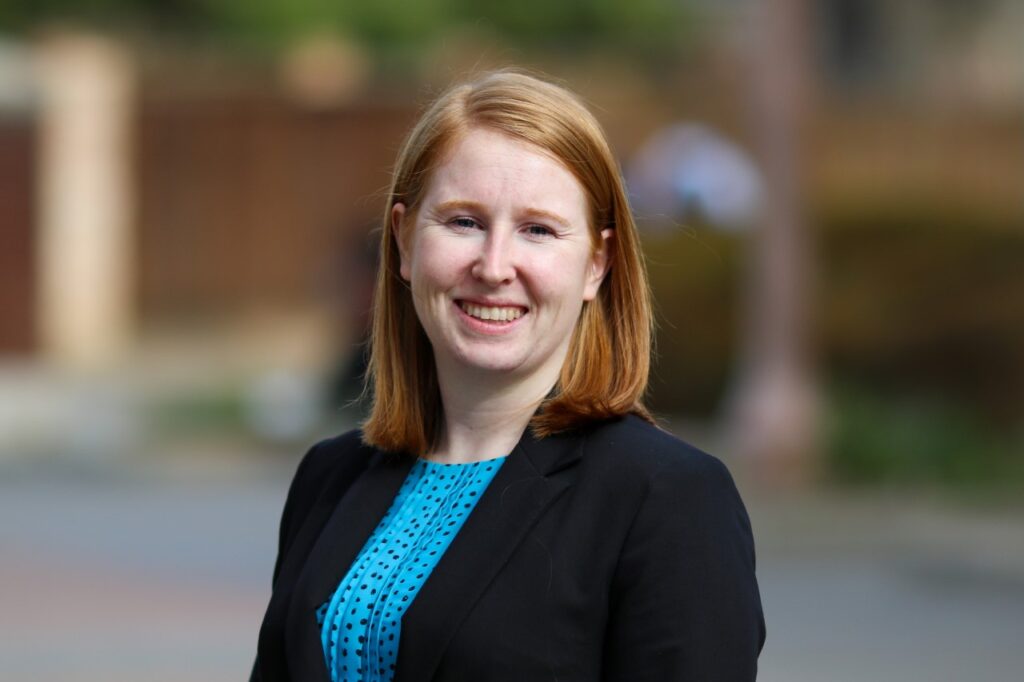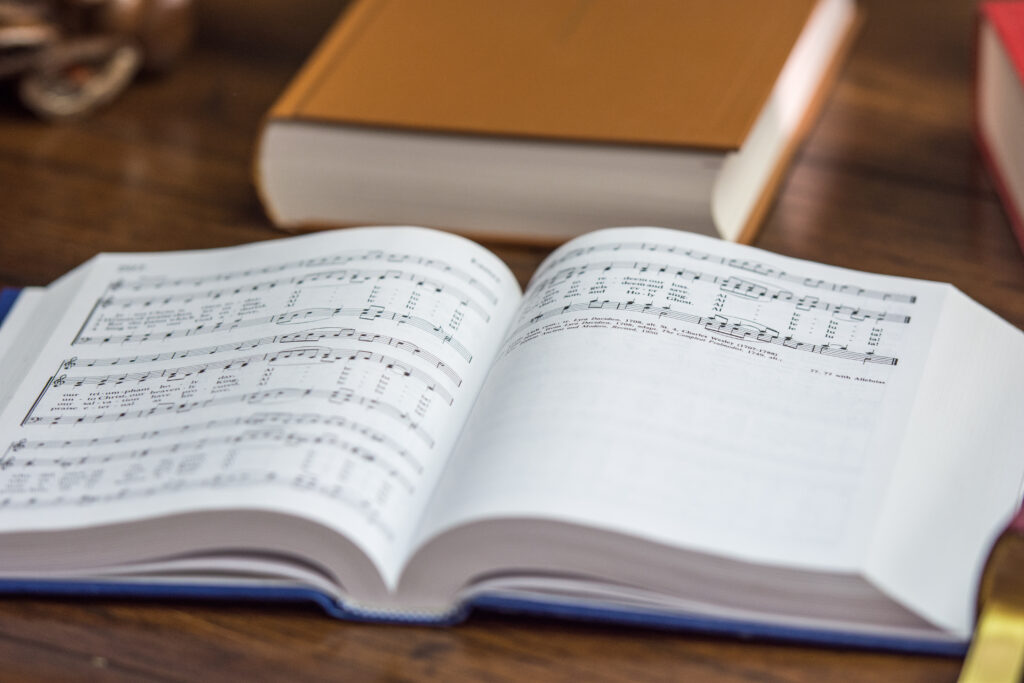This blog is a continuation of Part I. If you haven’t read Part I, click here. In Part I you’ll remember that we explored the cultural and practical dimensions of congregational singing, focusing on how harmonies are perceived as “showy” or essential across different church traditions. Emphasizing the role of melodies as the core of worship singing, we discussed how harmonies can facilitate participation or detract from communal worship, depending on their complexity and cultural context.
What is “showing off”?: The Musical Layers of Congregational Singing – PART II
- Ad-libs
This third layer is often the divide between the traditional and contemporary church. As previously mentioned, hymnals provide congregations with the exact notes to sing both melody and harmony. Though achieved by rote instead of written music, contemporary worship songs have harmonies, too. This third layer is the ad-libs sung by the lead vocalist. It is important to note that this layer may not be present in every setting. However, many recordings from worship artists are from live settings where these sung ad-libs are included and then replicated by vocalists at the local level.
This is often the layer that is labeled “showy” in the United States. Since it is only sung by the lead vocalist, it draws attention to that person. However, these ad-libs are often serving some type of function. They operate as more than a vocal flourish. I have provided a typology of ad-libs elsewhere, but I want to summarize some of the main functions of ad-libs here.
Ad-libs can provide musical guidance or theological guidance.
A) Musical Guidance – Ad-libs can provide direction for the congregation to know what is coming next. For example, in the song “Living Hope” the chorus can be sung once or twice. A vocalist could sing the world “Hallelujah” after the end of the chorus to indicate a repetition of the chorus.” In doing so, the people know to go to the top of chorus instead of singing the tag at the end of the song.
B) Theological Guidance – Ad-libs can also provide theological depth for the congregation. This is achieved by singing words that enhance and shape the lyrics of the song. For example, the Passion version of the song, “Jesus Paid It All” includes a bridge with the line “O praise the One who paid my debt and raised this life up from the dead.” At the end of the bridge, Kristian Stanfill continues to sing the words, “Jesus, Jesus, You’re the One, the Son of God, the Conqueror of death, the King of kings, the sacrificial Lamb.” After an extended version of singing of praise the “One,” Kristian Stanfill sings and elaborates on who that One is guiding the people into a deeper truth about to whom they are singing.
The line that often gets drawn between “showy” and not is whether these ad-libs are sung. Musical and theological guidance can be achieved through spoken ad-libs. These spontaneous moments can be spoken and are often received with their purpose in mind as opposed to when they are sung and people’s attention is drawn to the music being sung instead of the words. Most people would not think anything of someone saying, “Let’s sing that chorus again” but may be hesitant when someone sings, “Sing Hallelujah,” to indicate a chorus repetition. In some instances, the choice to sing the beginning lyrics of the section could even be practical when there isn’t enough time to say “sing that bridge again.” An example of this is found in a video of Brooke Ligertwood singing the bridge of “Jesus Paid It All,” where she sings, “O praise” to tell the people to keep singing the bridge.
Ad-libs do draw attention to the person who is singing; however, these ad-libs can be used in a way that provides guidance rather than highlighting vocal ability.
Lastly, these ad-libs can provide permission for the congregation to sing their own song to the Lord, which brings me to the final layer:
- Free/Spontaneous Worship
Moments of free or spontaneous worship are common practice within Pentecostal/charismatic spaces. Often this time is introduced as singing your own song to the Lord. While originating from Pentecostal/charismatic spaces, this practice has migrated into the contemporary worship context. During instrumental breaks sometimes leading into a bridge or coming out of a bridge before a final chorus, a worship leader may encourage people to “lift up your voice to the Lord” or to “sing your own song to the Lord.” In these moments, the screens do not display any lyrics. In my experience, people who choose to participate in these moments will sing words from the song or expand on them like guiding ad-libs.
Like ad-libs, these moments could be considered showy when the microphones pick up what the vocalists are doing on stage and the congregation hear them. In contexts where the congregation is encouraged to join in and feels comfortable doing so, the congregation is focused on the song that they are singing to the Lord instead of what other people are singing.
Are We Asking the Right Question?
Have you ever been in a worship service and thought that what someone sang on stage was “showy”? Likely, the layer mentioned above that you thought was showy is different than what someone else might choose. Since my experience in Indonesia, I have been pondering what makes something considered showing off. Yet, at the same time, as I thought through each musical layer, I wondered if we are focusing on the wrong thing. Maybe the question should be “How is what they are doing glorifying God?” rather than “Is what they are doing glorifying God or is it just showy?” Maybe our conversations have been focusing on the negative instead recognizing the ways that what another church may decide to do in their singing practices is actually glorifying God and encouraging people to worship. Maybe what we do in church is a reflection of what we value. A church that only sings the melody could be a church that prioritizes unity and oneness within the body. A church that sings harmonies could be a church that prioritizes unity through diversity and combining different pitches into one sound. A church that lets vocalists sing ad-libs might be a church that prioritizes encouragement and guidance beyond the lyrics. A church that practices free worship may be a church that longs to reflect the biblical practice of raising a joyful noise to the Lord by singing different words and melodies at the same time.
As we think about how different churches sing in worship, perhaps what we should be asking is not whether something is “showy” but rather, how does this church’s congregational singing practices demonstrate their values and glorify God. So many things can be God glorifying if the heart behind it is also God glorifying.
 Blogger Shannan Baker is a postdoctoral fellow in music and digital humanities at Baylor University, where she recently finished her Ph.D. in Church Music (2022).
Blogger Shannan Baker is a postdoctoral fellow in music and digital humanities at Baylor University, where she recently finished her Ph.D. in Church Music (2022).



 I recently became aware of how little we know of what the church sings though recent work with the Worship Leader Research (WLR) team. WLR is a collaborative group that studies the contemporary worship music industry and church practice. Some of the feedback to our findings largely focused on what was missing. We identified the primary contributors of contemporary worship songs by looking at the Top lists from CCLI and PraiseCharts, but there were artists that are widely used that were not found on both lists. Many churches that sing songs from other artists, such as Sovereign Grace, City Alight, the Gettys, etc., noted that our research didn’t include songs from those artists. People commented on social media and in direct messages to our team about the songs that they sing regularly at their church that weren’t mentioned in our study because of our methodology for creating our list.
I recently became aware of how little we know of what the church sings though recent work with the Worship Leader Research (WLR) team. WLR is a collaborative group that studies the contemporary worship music industry and church practice. Some of the feedback to our findings largely focused on what was missing. We identified the primary contributors of contemporary worship songs by looking at the Top lists from CCLI and PraiseCharts, but there were artists that are widely used that were not found on both lists. Many churches that sing songs from other artists, such as Sovereign Grace, City Alight, the Gettys, etc., noted that our research didn’t include songs from those artists. People commented on social media and in direct messages to our team about the songs that they sing regularly at their church that weren’t mentioned in our study because of our methodology for creating our list. So how do we know what hymns are being sung by the Church? Well, the answer may seem simple—look at the hymnal. But which hymnal? There is a vast number of hymnals and many denominations have their own hymnals which contain a careful curated collection of songs that is different from other denominations. Even if one focused on a singular widely used hymnal, the Church does not simply start at #1 and go to the end of the book. Specific hymns are selected each week for worship. Again, churches are not required to report what hymns they are singing. So how do we know what the church is singing?
So how do we know what hymns are being sung by the Church? Well, the answer may seem simple—look at the hymnal. But which hymnal? There is a vast number of hymnals and many denominations have their own hymnals which contain a careful curated collection of songs that is different from other denominations. Even if one focused on a singular widely used hymnal, the Church does not simply start at #1 and go to the end of the book. Specific hymns are selected each week for worship. Again, churches are not required to report what hymns they are singing. So how do we know what the church is singing? Since it is not on CCLI, there is no way to report the songs that are used. Unfortunately, there isn’t a singular book that contains a collection of gospel songs from which to choose. If there is no requirement to report, how do we know which gospel songs are being used the most? How do we know what the church is singing?
Since it is not on CCLI, there is no way to report the songs that are used. Unfortunately, there isn’t a singular book that contains a collection of gospel songs from which to choose. If there is no requirement to report, how do we know which gospel songs are being used the most? How do we know what the church is singing?